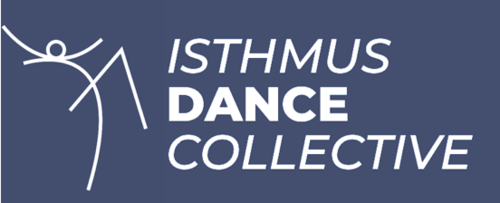A Beginner's Guide: How to Talk and Write About Dance
The last time you attended live, in person dance performance, do you remember standing in the lobby talking about it with friends and family after? On the way home did you enjoy rehashing all of the thrilling moments you experienced? How comfortable did you feel talking about dance? Was it difficult to find the right words for it? You can up your dance talk game and greatly increase your enjoyment of dance with a little help from this beginner’s guide.
Dance is a form of physical artistic expression, and even for professional dance artists it can be difficult to put into words the things that we see, feel, and think about when experiencing dance. For people new to dance it can feel daunting, even frustrating - like there’s some kind of secret message to decode.
Here’s the thing - your experience of the dance is valid. The same dance can affect five different people in five different ways, or even the same person in a different way every time they experience it anew. Many dance artists want to learn about how the audience experiences their work. They want to know how people from different backgrounds, with different life experiences and perspectives *experience it differently.
*I say experience when writing this because although dance is primarily thought of as visually consumed, dance can be experienced in non-ocular ways.
Often the lobby after a live performance is the place where the most discussion about a performance takes place - at least before Covid-19 shut downs. Historically, there has been more community involvement around dance from critical reviews to discussion and exchange within communities. However that has diminished as newspapers become digital and fewer journalists are able to specialize in writing about dance and our communities have become more and more virtual.
So how do we enhance that experience of talking with friends in the lobby after a performance? How do we share with dance artists and the community at large how their work moves us, and affects our lives and how we think?
I would personally like to encourage dance audiences to empower themselves to write about and share their thoughts and feelings about dance.
Let’s do a quick comparison with food. The first time you try a new kind of cuisine you’re not likely to have a highly nuanced experience and understanding of the food unless you’ve had a lot of prior experience trying and thinking about new (to you) foods. The more experience you get with that kind of cuisine the more you’re able to compare and contrast, the more the subtleties of that particular dish will reveal themselves to you. You’ll be able to put more precise words to the experience of eating that food.
The same goes for dance. Just like most things, the more you practice the better you’ll get at talking about and writing about dance. So you just need to get started!
Where do you begin you ask? Below are some prompts to get you started thinking about, writing about, and talking about dance:
What did you experience? What stands out the most in your memory?
How did it make you feel? Were there any big emotions or moods?
Did the movement remind you of anything? Of any other dance you’ve attended? Of movement from everyday life? Of animal movement or movement from particular jobs or activities?
What did the music, costumes, set pieces, lighting, (or if it’s a screen dance, shots, edits, effects) etc. contribute to the dance? Did they add to the mood? Did they enhance characters or create more of an environment? How did those things affect or enhance the movement or change the movement into something new?
Did the title of the dance or any artist/program notes add to your experience of the dance? Did you read them before or after watching?
Did watching the dance get you thinking about anything? Did it give you ideas? Did it challenge you to think or feel differently about anything?
Did you like it? Did it leave you feeling confused or frustrated? What in particular did you enjoy? What would you have liked more of? What was difficult, confusing, frustrating, etc.? Do you know why?
If you’re writing, grab your journal or open up a new document on your computer. Start with one of the questions above and just get all your thoughts out before moving on to another question. If you’re wanting to share what you wrote later you can always come back to it and arrange it in a way that’s better for others to read.
When talking with friends and family about a shared dance experience you can use any of the questions below as conversation starters. Each person can get a turn answering the question and if it doesn’t organically evolve into a dynamic conversation you have more questions you can try. You might be surprised at how different your perspectives are or at the new ideas that you get from the way others talk about the dance.
Above all, I urge you to get involved. Dance is a living and breathing art form and part of the air that dance needs to thrive is community engagement. Dance does not exist in a vacuum - it comes from somewhere and goes somewhere, and audiences are a crucial part of that process. As dance survives this pandemic and continues to grow and thrive in whatever world we emerge into, audience participation like this is going to be an important part of it.

